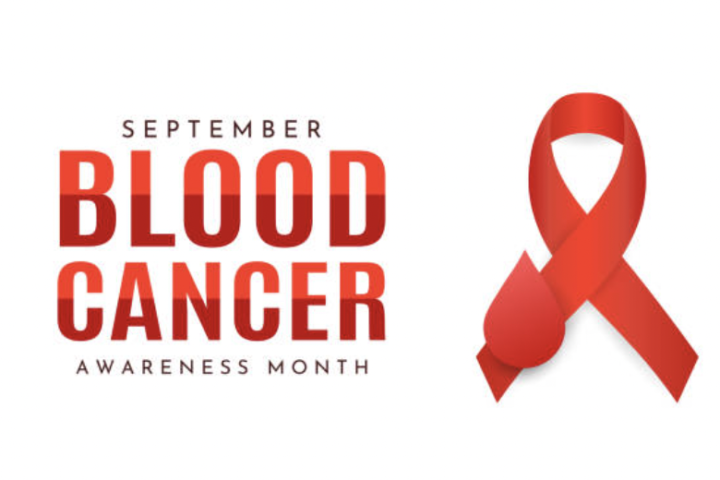September is Blood Cancer Awareness Month and it’s a great chance to learn more it. According to the Cleveland Clinic, blood cancers start when the DNA in your blood cells mutates or changes, producing abnormal blood cells that navigate your bloodstream. These abnormal blood cells can grow faster, live longer, and spread more than normal cells, harming your body. If they grow in numbers, abnormal blood cells can clog the bloodstream, preventing red cells, white cells, and platelets from doing their jobs, leading to dangerous side effects.

Leukemia
When cells multiply, they copy chromosomes – strands of DNA – to the new cell. Sometimes, mistakes are made in this coping process which leads to mutations: a natural and normal process. One mutation, leukemia, particularly harms white blood cells, blocking them from helping your body fight viruses and infections. It can also lead to the suppression of genes that help cells grow and prevent tumors. Healthline.com says this illness will affect about 1.5% of people and is the most common cancer in kids and teens.
Like many forms of cancer, exposure to radiation, certain chemicals, and smoking can cause or magnify the mutation that leads to leukemia. There are no cures for leukemia, so the best way to prevent it is to avoid the environments and habits that can cause it. Symptoms of leukemia include fever, lethargy, paleness, shortness of breath, and increased bruising and bleeding.
Lymphoma
There are two kinds of lymphoma: Hodgkin’s lymphoma (HL) and Non-Hodgkin’s lymphoma (NHL). Both lymphomas begin in your body’s lymphocytes – white blood cells that fight cancer, foreign viruses, and bacteria – multiply abnormally and uncontrollably, compromising the immune system. The main difference is that Reed-Sternberg cells are detected in HL but not NHL. Both lymphomas can be acquired via radiation exposure, viruses, HIV/AIDS, or genetic immune disorders. Prevention methods include exercise, healthy diets, limiting radiation exposure, avoiding activities that increase the chance of getting HIV/AIDS and Hep-C infections, and not smoking.
According to the Cleveland Clinic, NHL is easily treatable in its stages since cancer can be found in lymph nodes, but is usually detected after age 60. HL, however, occurs earlier in life, is easier to treat, and occurs mostly in young adults.
Myeloma
The Cleveland Clinic says multiple myeloma, the most common form of myeloma, occurs in your bone marrow and hurts white blood cells. Normally, your bone marrow makes plasma, or a B-cell, that creates antibodies to fight infection. With multiple myeloma, the plasma cells become abnormal cells that create abnormal plasma cells that can damage your blood, bones, kidneys, and tissue.
Signs and symptoms of multiple myeloma include weakness, vomiting, and sudden weight loss. You can get this condition from pre-existing genetic conditions, exposure to radiation or chemicals, inflammatory diseases, and high body fat content. Like other cancers, there is no way to guarantee prevention from multiple myeloma, but your best bet is to avoid its causes.
More Information
For more information about blood cancer, visit Healthline.com, American Association for Cancer Research, or the Cleveland Clinic.



Comments